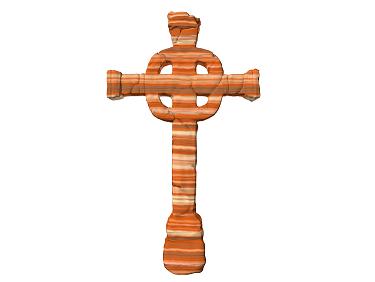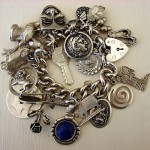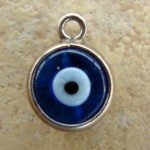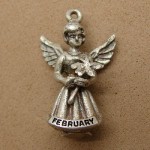Historical and Ancient Charm Meanings
 People have adorned themselves with jewelry since ancient times. Throughout history jewelry represented specific values or beliefs, and wasn't necessarily worn for decoration. Often talismans or amulets were worn as symbols of luck or to keep evil spirits at bay. Charms as jewelry evolved from such trinkets and I've collected some of the meanings of popular charms.
People have adorned themselves with jewelry since ancient times. Throughout history jewelry represented specific values or beliefs, and wasn't necessarily worn for decoration. Often talismans or amulets were worn as symbols of luck or to keep evil spirits at bay. Charms as jewelry evolved from such trinkets and I've collected some of the meanings of popular charms.
Ankh - Egyptian symbol of physical and eternal life. The top is eternal life, and the cross represents material things.
Buddha - Buddhist religious image of the basic tenants of the religion. Represents a calm, still and serene life.
Celtic Cross - Four corners of the earth joining together bringing eternity and everlasting faith.
Chai - Hebrew letters that mean giving life or living thing.
Celtic Knot - Intertwining lines represent the infinite cycles of birth and rebirth in both physical and ethereal realms.
Claddagh - Signifies fidelity and never-ending commitment between a bride and groom.
Cross - Symbol of Christian faith. Represents Christ's victory over death and sin.
Evil Eye - In parts of the middle east the evil eye beads are worn to protect against envious gazes from people that can bring bad luck.
Eye of Horus - Egyptian sign of strength and wisdom.
Five Pointed Star - Serves as magical protection and good fortune.
Four Leaf Clover - Good luck and good fortune.
Hamsa - Jewish symbol meant to avert the evil eye and protect oneself with the hand of God.
Heart - A poetic reference to the soul, and a symbol representing love.
Om - Hindu quest for spiritual perfection representing the manifest and unmanifest aspects of God.
Saint Christopher - A protector that bears the weight of the world.
Scarab Beetle - Egyptian symbol for immortality or rebirth.
Star of David - Hebrew symbol meaning God rules the universe and protects from all directions.

More from my site
Category: All About Old Jewelry









